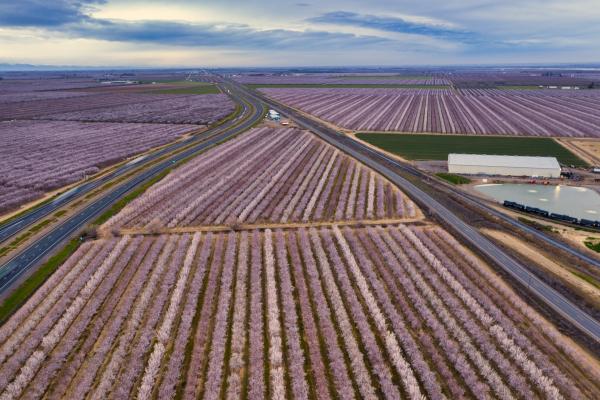Study Provides Detailed Analysis of North American Climate Trends, Predicting Intensifying Extremes

Researchers from The Ohio State University, led by former Byrd Center member Kyungmin Sung, now a research fellow at the Korea Environment Institute, examined how droughts and rainfall extremes are expected to intensify across different regions of the continent.
Byrd Center Principal Investigator, Assistant Professor James Stagge, was the study's senior author along with co-author, Professor Gil Bohrer, both from the Department of Civil, Environmental and Geodetic Engineering in the College of Engineering. The study, published earlier this month in Geophysical Research Letters, explores the evolving precipitation patterns of North America from the year 850 to predictions extending through 2100.
The study identifies a marked contrast in climate patterns between the American Southwest and Mexico, and the Northeastern United States. The Southwest is projected to experience increasingly severe drought conditions almost year-round. At the same time, the Northeast, including states like Ohio, is expected to encounter more intense and frequent wet seasons, especially during winter and early spring.
Central regions of the U.S. are also highlighted for their future climatic instability, characterized by significant oscillations between dry and wet periods. Such variability poses challenges for water resource management as planners and engineers struggle to anticipate and mitigate the impacts of these extremes.
Researchers used a blend of data sources to conduct their analysis, including two modern compilations of precipitation observations, historical data inferred from tree rings, and projections from two climate models. This integrative approach allowed the researchers to compare climate patterns observed in the past 20 years with those occurring before industrialization began.
The study shows that the scale of change seen in the past 100 years far exceeds those recorded in the previous 700 years, suggesting a strong influence from increased greenhouse gas emissions. Furthermore, the scale of the current and future changes significantly exceeds the natural climate variability observed in the past. Maps generated from the data demonstrate smooth spatial transitions in climate patterns and confirm the reliability of the observed changes.
The findings significantly affect various sectors, particularly agriculture, construction, and urban planning. The increased frequency and intensity of extreme weather events and their effects on the central part of the country could lead to more frequent water shortages and surpluses, complicating efforts to maintain household water-source reservoirs at optimum levels.
This pivotal research adds to our understanding of climate dynamics, serves as a critical tool for future planning and adaptation strategies, and underscores the urgent need for proactive measures to address the anticipated challenges posed by these evolving weather patterns to decrease impacts on people, the economy, and the environment.
To learn more, visit Ohio State News or read about the study.

